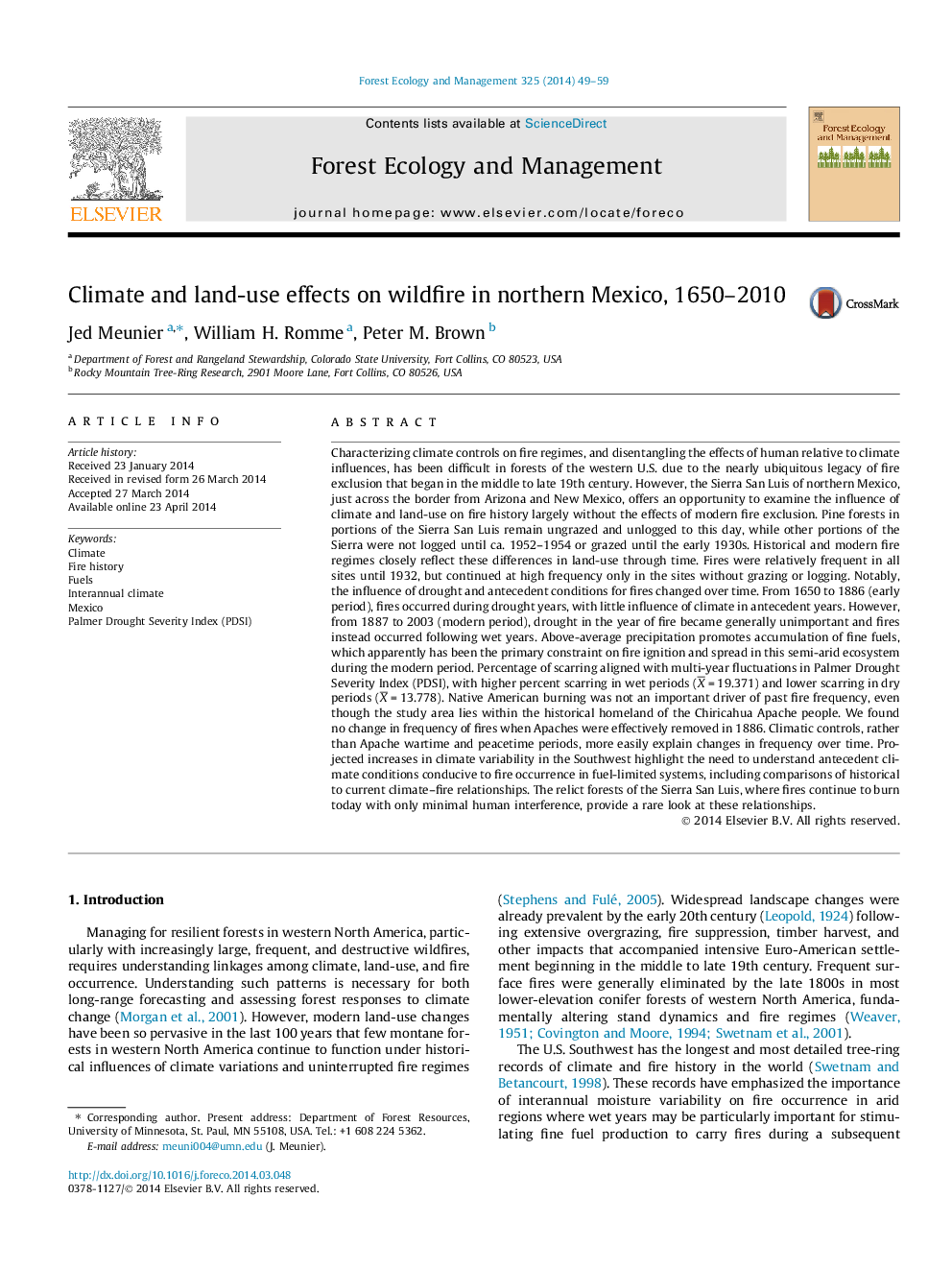| کد مقاله | کد نشریه | سال انتشار | مقاله انگلیسی | نسخه تمام متن |
|---|---|---|---|---|
| 86542 | 159195 | 2014 | 11 صفحه PDF | دانلود رایگان |
• We examined fire history in sites without intensive modern land-use changes.
• Influence of drought and antecedent moisture on fire occurrence changed over time.
• Role of antecedent moisture for fire occurrence has grown.
• No change in frequency of fires after Apache removal ca. 1886 in absence of grazing.
• Sites with cattle grazing were accompanied by reduced fire frequency.
Characterizing climate controls on fire regimes, and disentangling the effects of human relative to climate influences, has been difficult in forests of the western U.S. due to the nearly ubiquitous legacy of fire exclusion that began in the middle to late 19th century. However, the Sierra San Luis of northern Mexico, just across the border from Arizona and New Mexico, offers an opportunity to examine the influence of climate and land-use on fire history largely without the effects of modern fire exclusion. Pine forests in portions of the Sierra San Luis remain ungrazed and unlogged to this day, while other portions of the Sierra were not logged until ca. 1952–1954 or grazed until the early 1930s. Historical and modern fire regimes closely reflect these differences in land-use through time. Fires were relatively frequent in all sites until 1932, but continued at high frequency only in the sites without grazing or logging. Notably, the influence of drought and antecedent conditions for fires changed over time. From 1650 to 1886 (early period), fires occurred during drought years, with little influence of climate in antecedent years. However, from 1887 to 2003 (modern period), drought in the year of fire became generally unimportant and fires instead occurred following wet years. Above-average precipitation promotes accumulation of fine fuels, which apparently has been the primary constraint on fire ignition and spread in this semi-arid ecosystem during the modern period. Percentage of scarring aligned with multi-year fluctuations in Palmer Drought Severity Index (PDSI), with higher percent scarring in wet periods (X‾ = 19.371) and lower scarring in dry periods (X‾ = 13.778). Native American burning was not an important driver of past fire frequency, even though the study area lies within the historical homeland of the Chiricahua Apache people. We found no change in frequency of fires when Apaches were effectively removed in 1886. Climatic controls, rather than Apache wartime and peacetime periods, more easily explain changes in frequency over time. Projected increases in climate variability in the Southwest highlight the need to understand antecedent climate conditions conducive to fire occurrence in fuel-limited systems, including comparisons of historical to current climate–fire relationships. The relict forests of the Sierra San Luis, where fires continue to burn today with only minimal human interference, provide a rare look at these relationships.
Journal: Forest Ecology and Management - Volume 325, 1 August 2014, Pages 49–59
